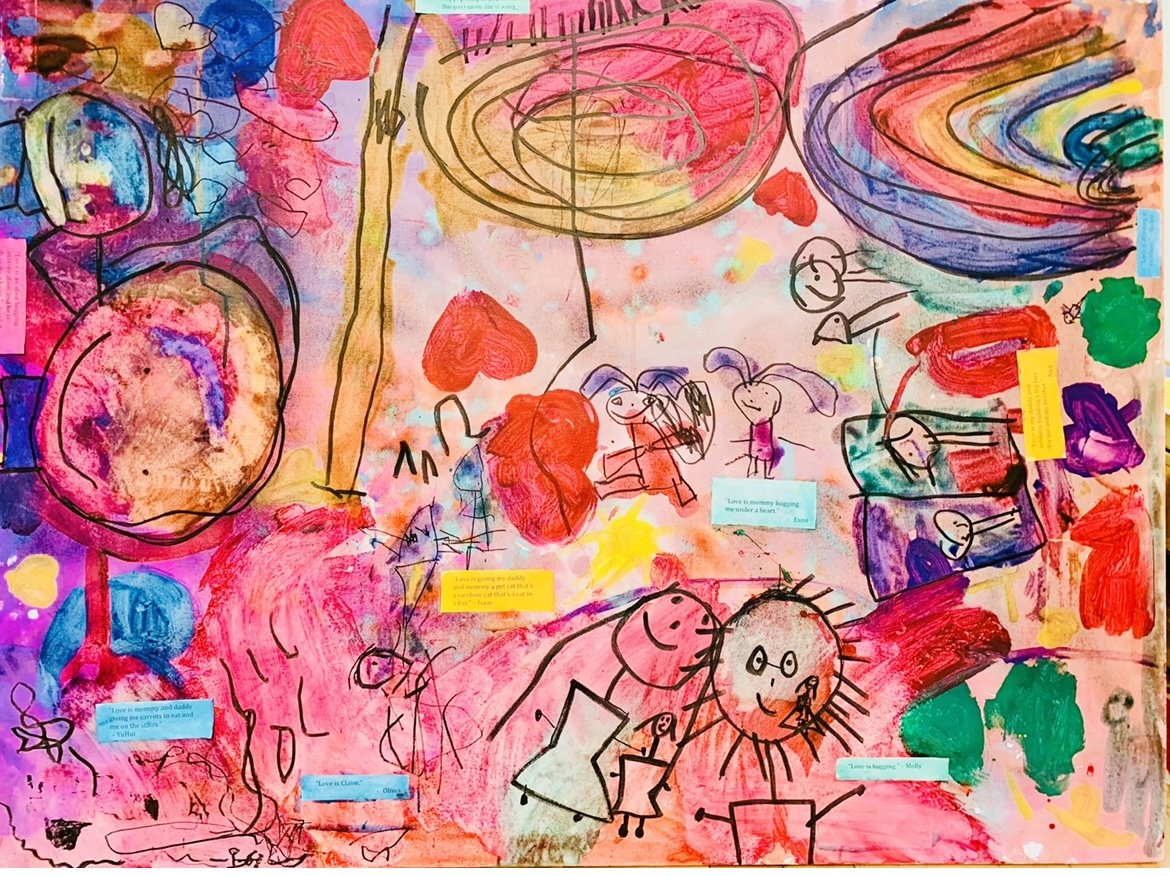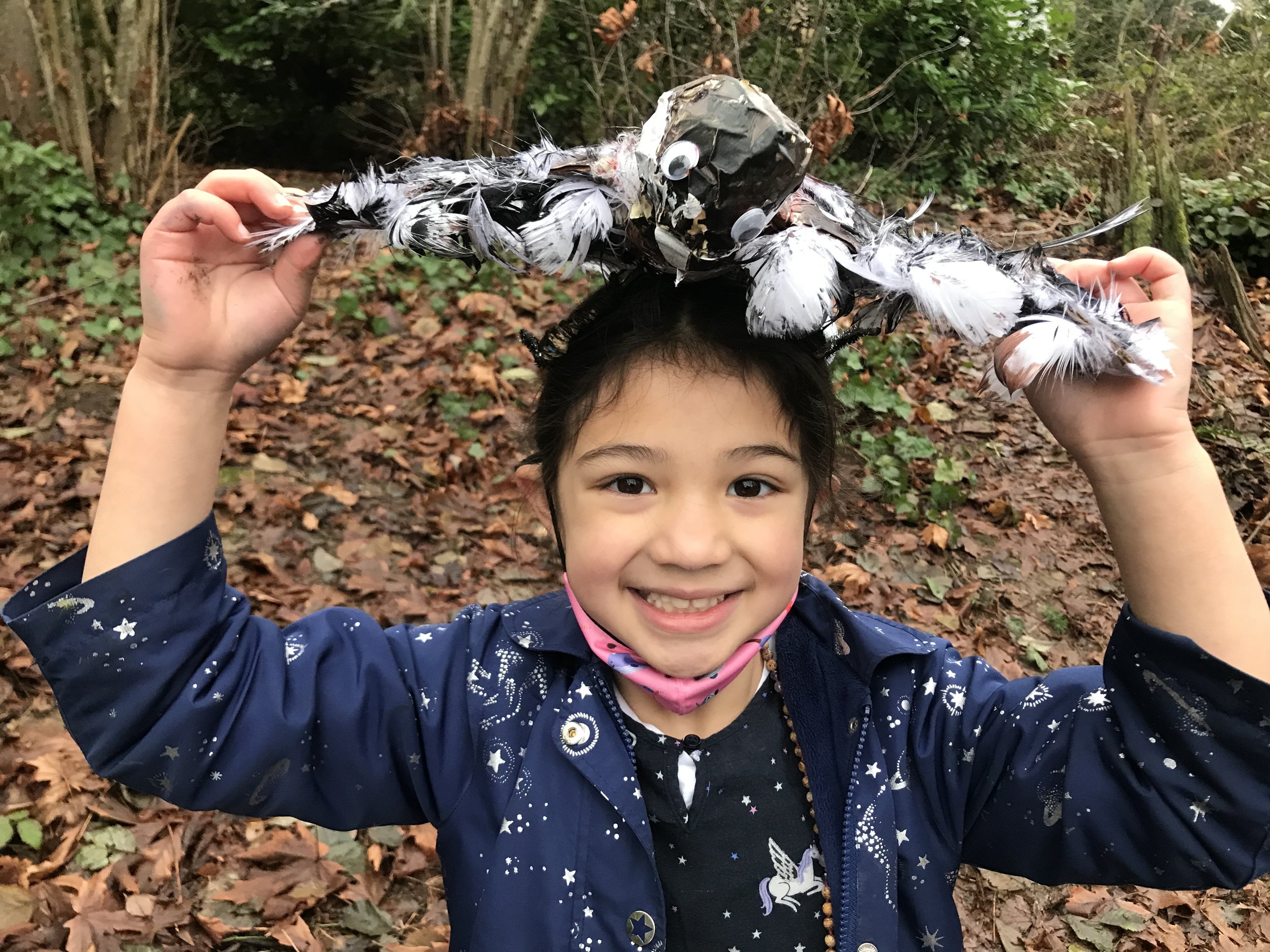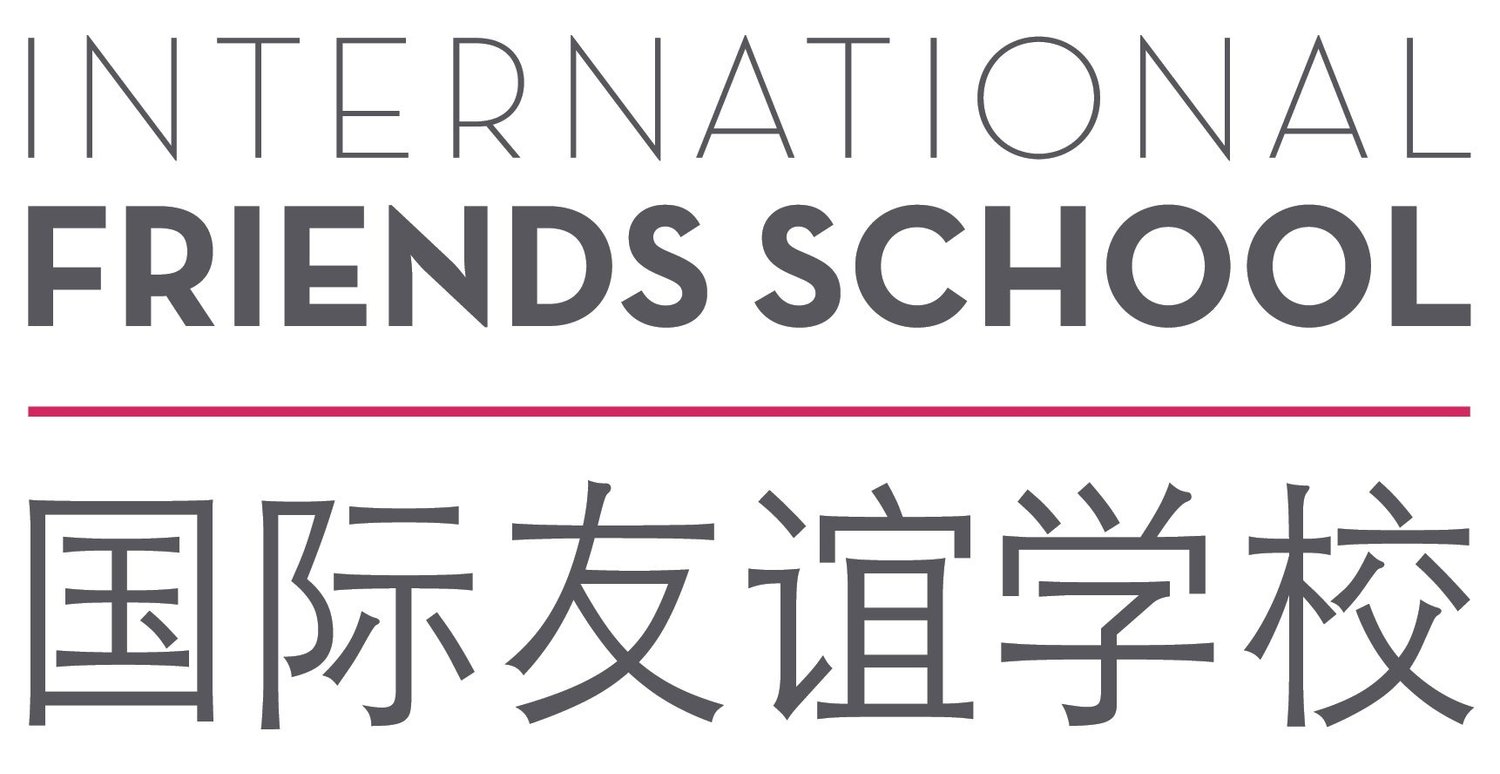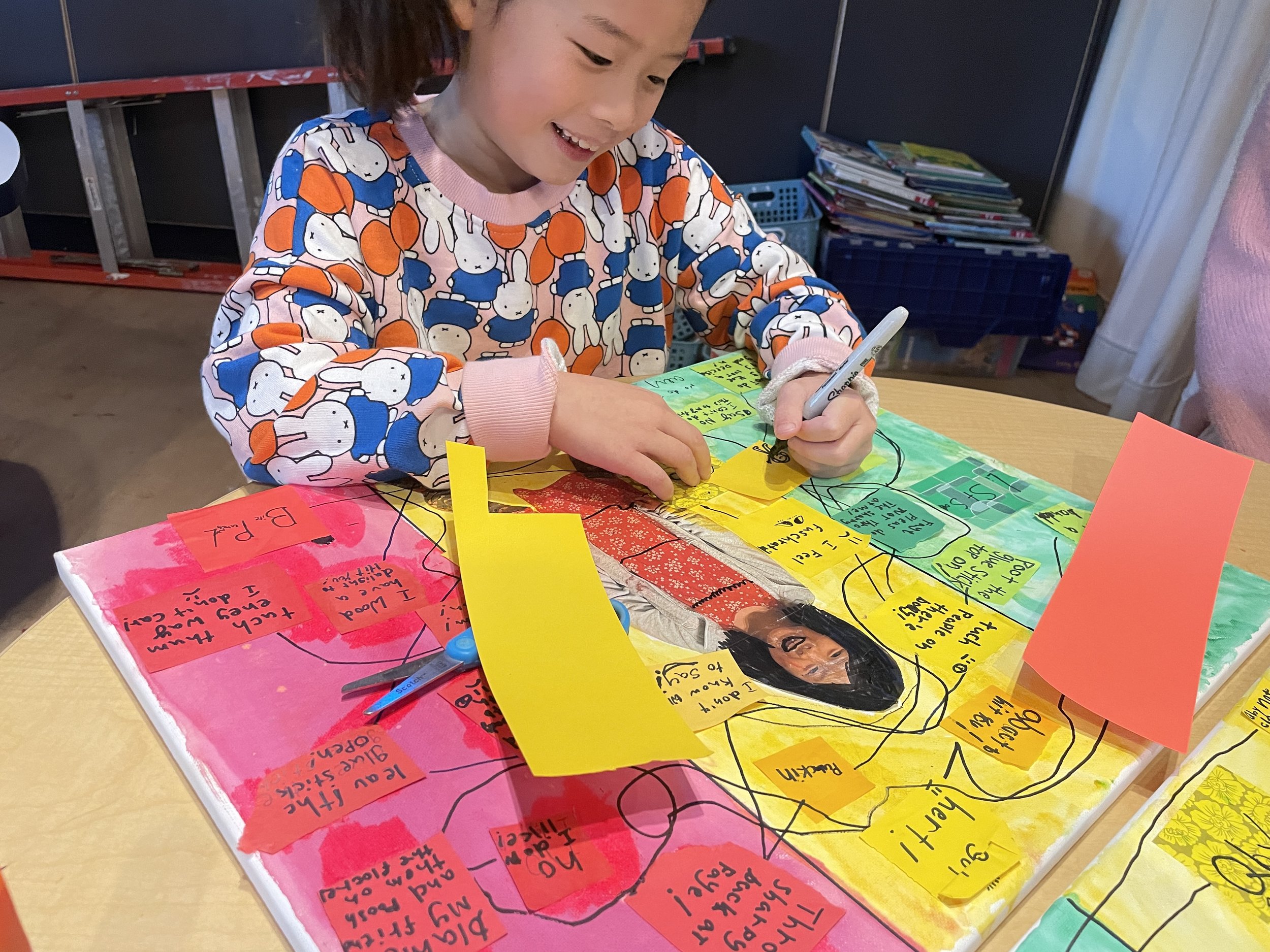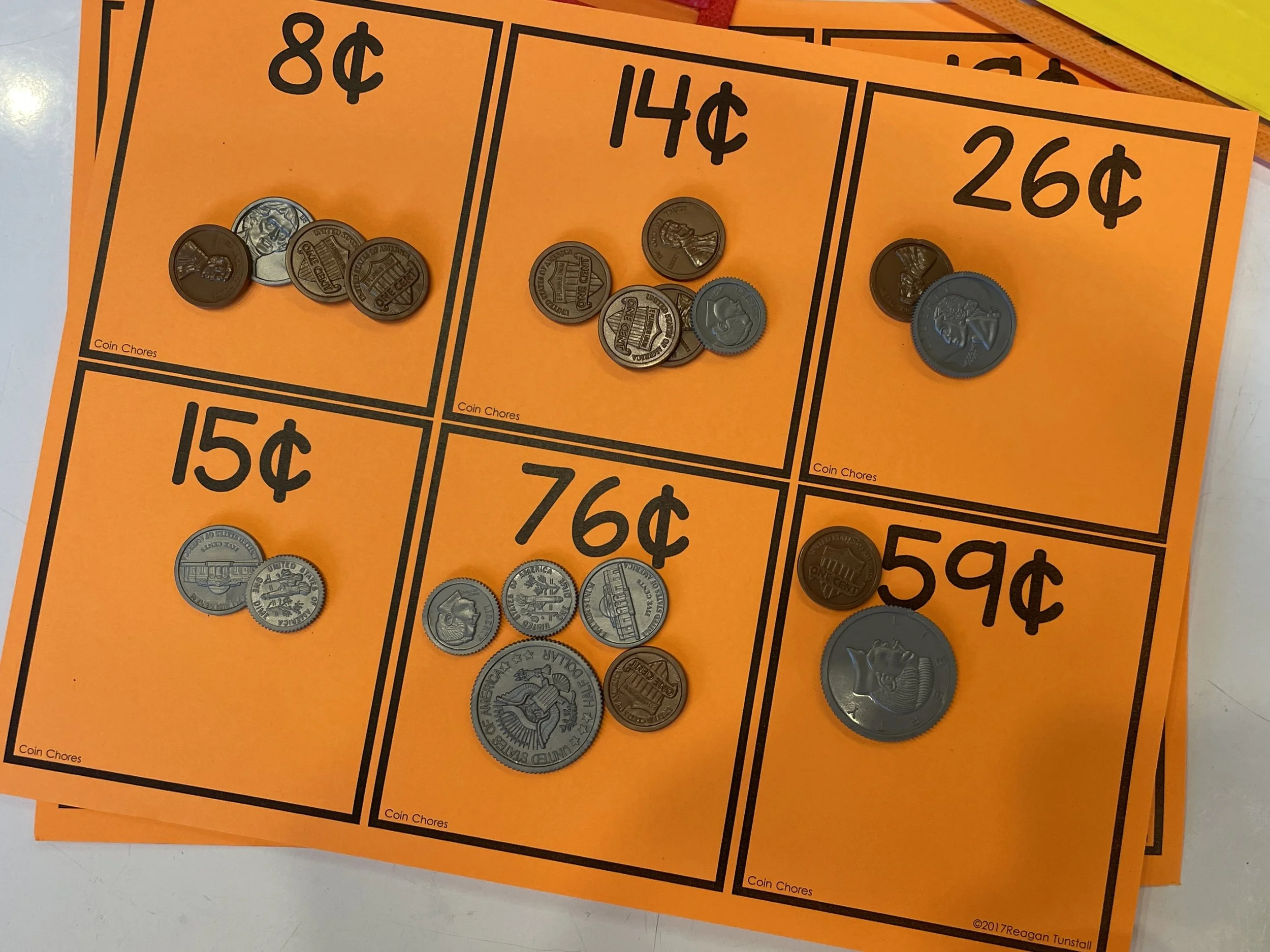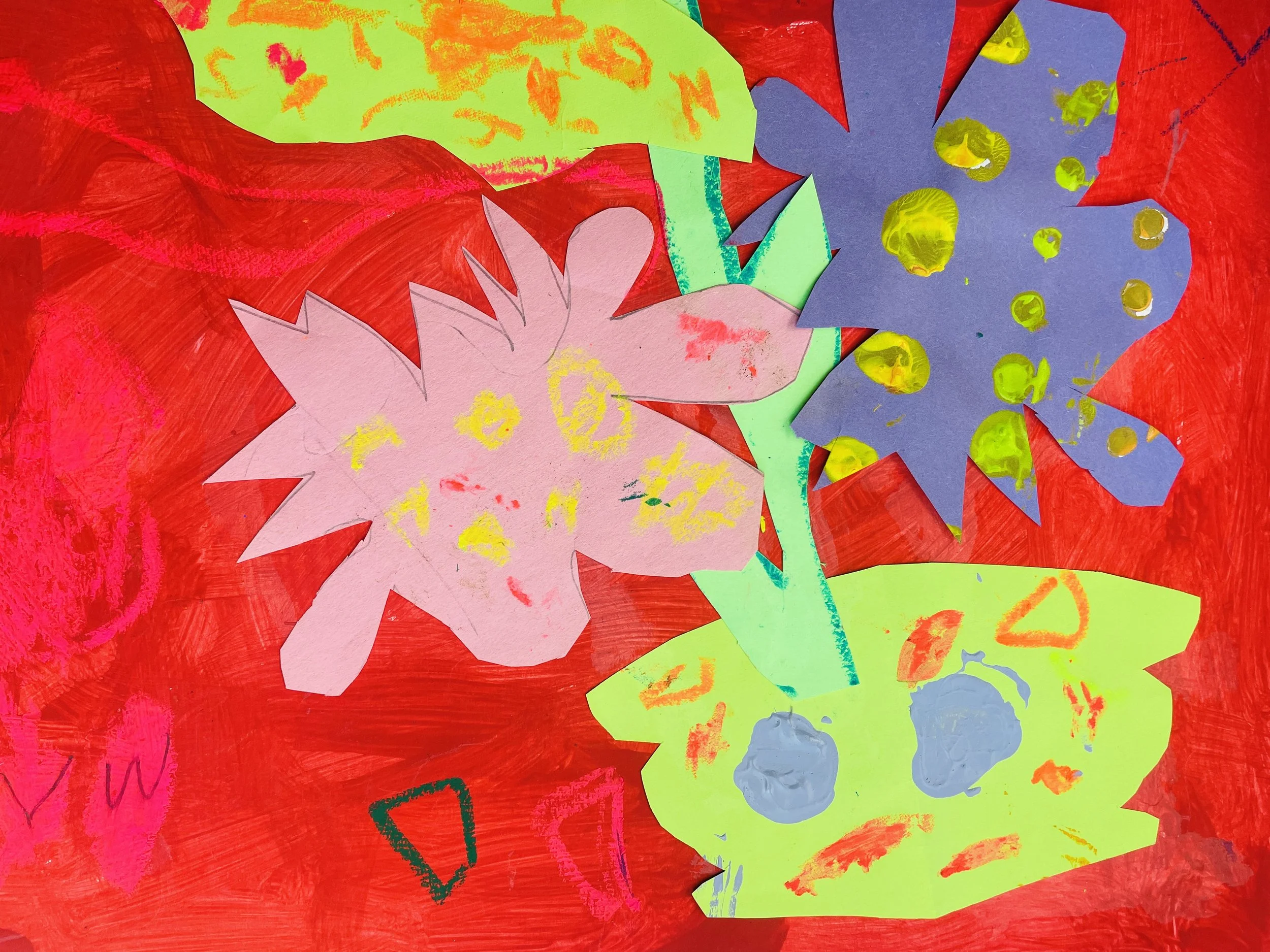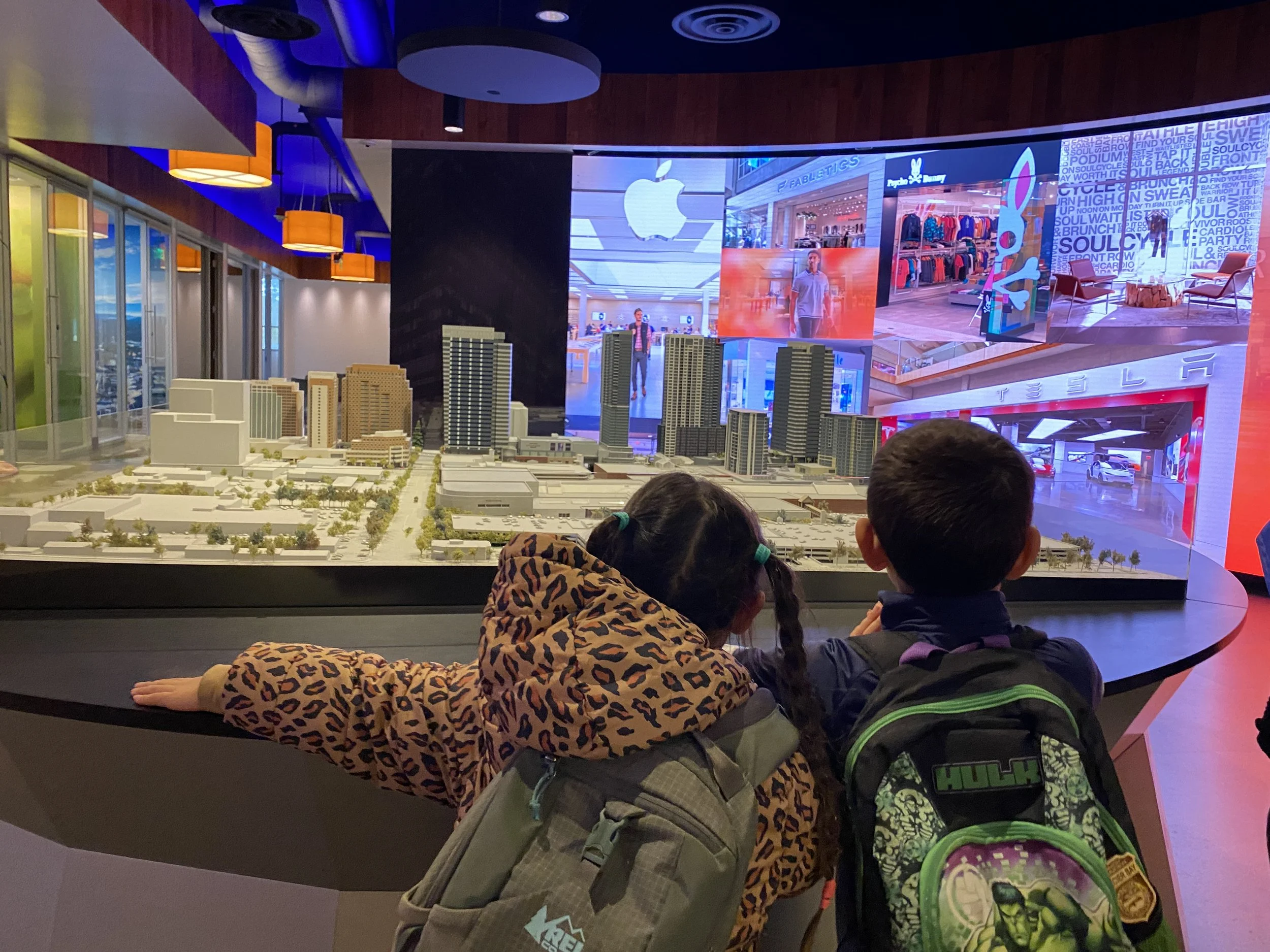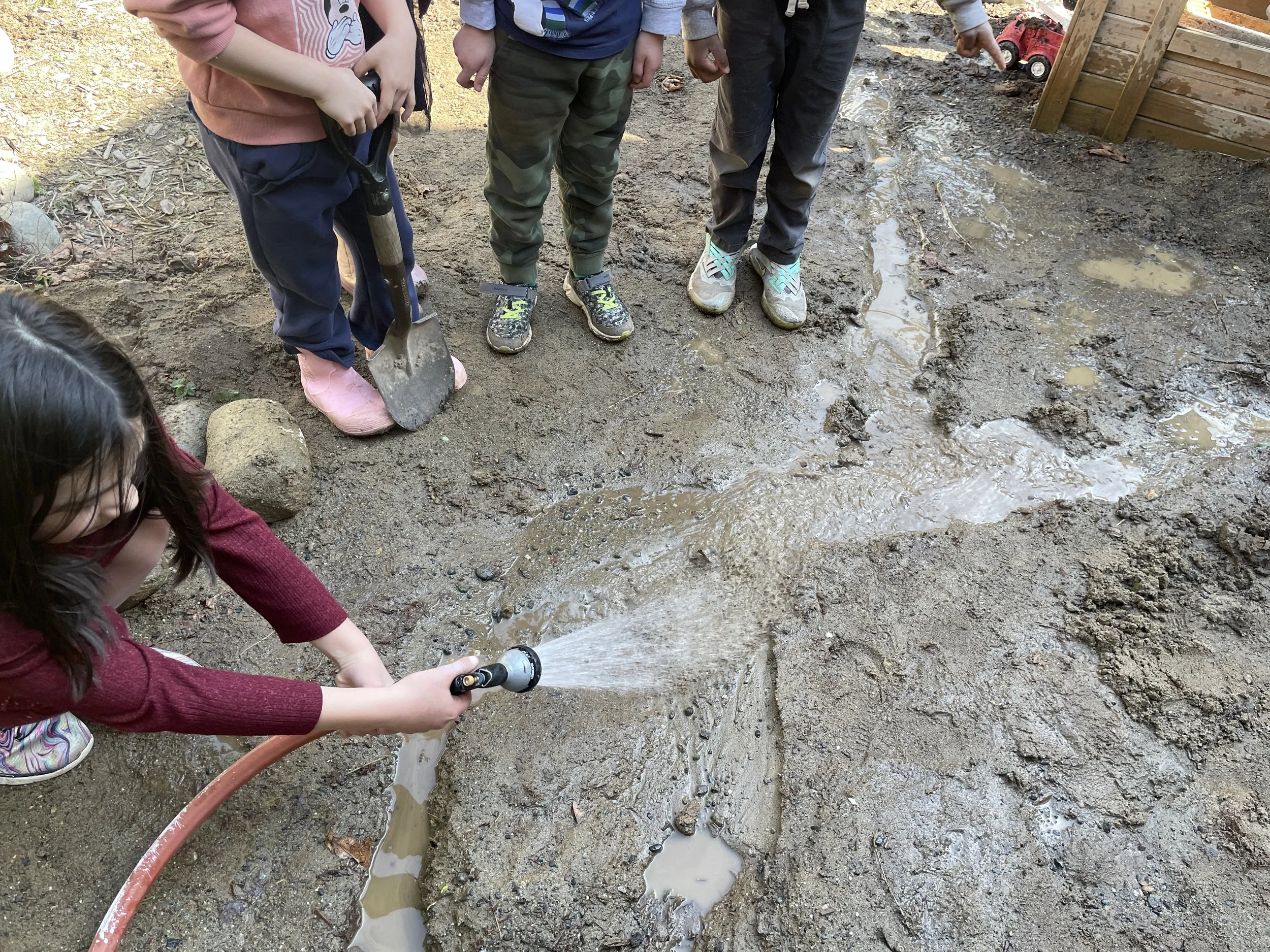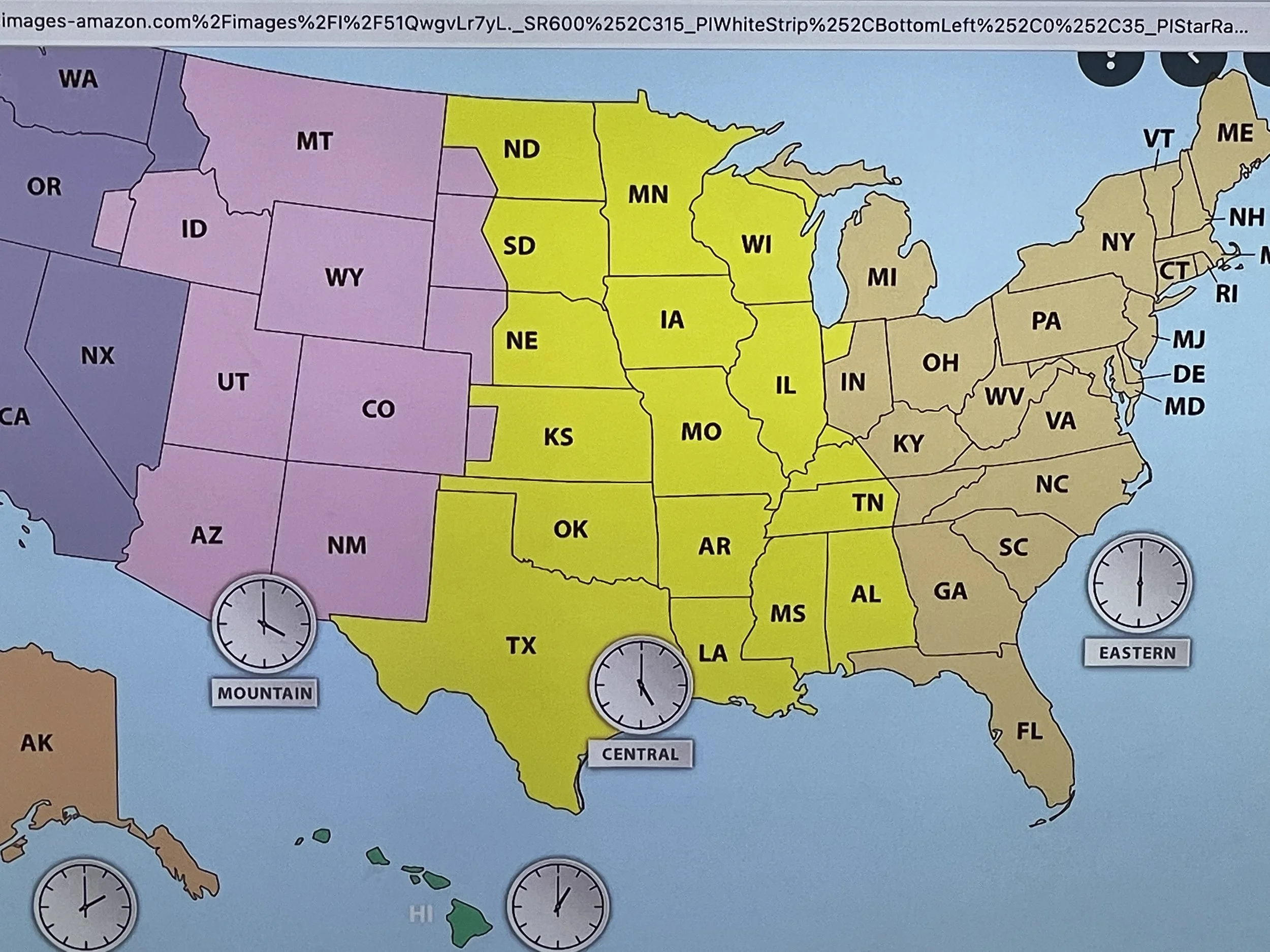
Second-Grade Program Overview - Qilin
Teacher-Student Ratio 1:8 (max)
Class Size: 16 Students (max)
Curriculum: The Qilin Curriculum occurs in an 75% Mandarin immersion environment. The students have core curricular classes and specialty classes each week, along with 2 hours of meal & playtime. The curriculum also includes ongoing enrichment, a hallmark feature of our elementary program.
This is the last year the IFS enrolls students with little or no Mandarin proficiency.
Language Ratio Mandarin 75%, English 25%
Assessment Highlights: Please see last section on this page for updated Assessment Highlights
Sample Schedule
2nd Grade Learning at IFS
Welcome to our extraordinary second grade program, where young minds are held to new standards of intellectual engagement. Our students dive into the fascinating world of economics and financial literacy, exploring the money market and learning to distinguish between needs and wants. They choose their own real life heroes and uncover the common threads that define true heroism, culminating in an information report + presentation delivered entirely in Mandarin. Our second graders become highly proficient in both reading and writing Mandarin, while four English classes per week keep them ahead of the curve.
Our second graders become intrepid adventurers, studying landforms, rocks, and the powerful forces of erosion. They witness firsthand how wind and water shape the land, creating breathtaking landscapes. In mathematics, they conquer multiplication and tackle word problems with confidence, developing a solid foundation in problem-solving skills.
But our program goes beyond academics; we prioritize the social-emotional well-being of our students, nurturing essential life skills such as empathy, resilience, and effective communication.
In our second grade program, excellence knows no bounds, and our students emerge as intellectually sharp and emotionally intelligent individuals, ready to learn with intrepidness and stamina.
Core Subjects
-
Curricular Materials: Level Learning, Better Immersion, and authentic materials
Standards:
ACTFL for communication
Common Core State Standards for Reading and Writing Skills
Examples of Key Skills
Communication
Students understand familiar questions and statements from simple sentences in conversations.
Students present on familiar and everyday topics, using simple sentences.
Students express, ask about, and react with some details to preferences, feelings, or opinions on familiar topics.
Reading
Students recount stories, including fables and folktales from diverse cultures, and determine their central message, lesson, or moral.
Students compare and contrast two or more versions of the same story (e.g., Cinderella stories) by different authors or from different cultures.
Students acknowledge differences in the points of view of characters, including by speaking in a different voice for each character when reading dialogue aloud.
Students describe the connection between a series of historical events, scientific ideas or concepts, or steps in technical procedures in a text.
Writing
Students write opinion pieces in which they introduce the topic or book they are writing about, state an opinion, supply reasons that support the opinion, use linking words (e.g., because, and, also) to connect opinion and reasons and provide a concluding statement or section.
Students write informative/explanatory texts in which they introduce a topic, use facts and definitions to develop points and provide a concluding statement or section.
Students write narratives in which they recount a well-elaborated event or short sequence of events. They include details describing actions, thoughts, and feelings, using temporal words to signal event order, and providing closure.
-
Curricular Materials: Illustrative Math, Shuxue (China’s national curriculum)
Standards: Common Core State Standards
Examples of Key Skills
Students draw line plots.
Students create, represent, and solve story problems.
Students add and subtract within 1,000 using Place Value Strategies.
Students represent data and compare diagrams.
Students begin solving fractions.
Students represent numbers using multiplication arrays.
-
Curricular Materials: Logic of English, Epic!, Columbia University’s Teachers College literacy program
Standards: Common Core State Standards (parallel to our Mandarin standards)
Examples of Key Skills
Reading
Students recount stories, including fables and folktales from diverse cultures, and determine their central message, lesson, or moral.
Students compare and contrast two or more versions of the same story (e.g., Cinderella stories) by different authors or from different cultures.
Students acknowledge differences in the points of view of characters, including by speaking in a different voice for each character when reading dialogue aloud.
Students describe the connection between a series of historical events, scientific ideas or concepts, or steps in technical procedures in a text.
Writing
Students write opinion pieces in which they introduce the topic or book they are writing about, state an opinion, supply reasons that support the opinion, use linking words (e.g., because, and, also) to connect opinion and reasons and provide a concluding statement or section.
Students write informative/explanatory texts introducing a topic, using facts and definitions to develop points, and providing a concluding statement or section.
Students write narratives in which they recount a well-elaborated event or short sequence of events. They include details describing actions, thoughts, and feelings, using temporal words to signal event order, and providing closure.
-
Curricular Materials: our project curriculum is developed in-house, drawing from FOSS science kits and our curated book lists
Standards: Common Core State Standards
Our projects are designed based on an inquiry from science or social studies. Students approach the inquiry from multiple subject areas and develop and apply skills from different subjects. Our projects emphasize research, problem solving, critical thinking and often complement our school’s Quaker values (simplicity, peace, integrity, community, equality, and stewardship) by having real-world applications such as improving our school grounds with science or raising money to protect endangered animals in the Pacific Northwest.
-
In second grade, students have the opportunity to participate in two field trips that align with their project units.
In the fall students will visit the Bellevue Botanical Garden, participating in a workshop “Super Soil” to augment their project unit: Rocks and Hard Places.
In the spring students will participate in a field trip to Pike Place Market as part of their studies in the project unit: Market Economy. In addition to these field trips, second grade students will take public transit to the Bellevue public library one or more times during the year.
-
Curricular Materials: Everyday Speech
Standards: Common Core State Standards
Examples of Key Skills
Students learn to be aware of and use a growth mindset, believing we can succeed and improve.
Students assess and reflect on their emotions.
Students reflect on strengths and weaknesses in different areas of their lives.
Students replace negative self-talk with positive self-talk.
-
Curriculum Resources:
Geography, World News, UN Sustainability Goals, and Quaker testimonies.
Student Clubs offer Kindergarten students the unique opportunity to work across K-4th grade on collaborative explorations and initiatives. Students also explore world geography, world news, and major festivals around the world.
Led by the Head of School, Student Clubs is a deep dive into testimonies with students developing their own plans using the “Backward Design, Execute Forward” model.
Highlights from Student Clubs:
Students explore one testimony per trimester. An example is the Stewardship testimony (Winter 2024).
In mixed age groups, students found an environmental cause.
Students created a budget and a plan for creating items to sell at the Sustainability Fair.
Students created their own products, such as postcards or coasters, based on their theme. They also designed their booths in close collaboration.
Students figured out the net costs after expenditures and donated that amount to a cause that helps their animal or habitat.
Specialty Subjects
-
Standards: Common Core State Standards
Examples of Key Skills
Students sing in harmony with others, such as in rounds or partner songs.
Students listen to a variety of musical styles and genres, including classical, folk, jazz, and world music.
Students play simple classroom instruments, such as rhythm sticks, hand drums, xylophones, or recorders.
Students begin to recognize and understand basic music notation symbols, such as notes, rests, and clef.
Students recognize and appreciate the diversity of musical expressions and traditions around the world.
-
Standards: Common Core State Standards
Examples of Key Skills
Student continues to create art using a variety of materials and techniques.
Student explores how basic elements of art such as line, shape, color, texture, and space can be used to create different effects and convey meaning.
Students are exposed to art forms, styles, and cultural traditions from around the world during art studio time and also as part of our all-school Global Village projects.
-
Standards: Common Core State Standards
Examples of Key Skills
Students practice various locomotor skills such as walking, running, galloping, sliding, and skipping.
Students begin to learn about the benefits of physical activity for overall health and well-being.
Students engage in activities that promote cardiovascular fitness, muscular strength and endurance, flexibility, and body awareness.
-
Curricular Materials: Commonsense Media Curriculum (digital literacy), SFUSD K-2 Computer Science Curriculum (Computer Science), typing programs
Standards: Common Core State Standards
Examples of Key Skills
Science
Students study Earth’s systems, include rocks, minerals and land formations.
Students learn about environmental conservation and sustainability.
Technology
Students learn foundational skills using digital tools, including computers, tablets, and educational software.
Students learn basic coding concepts and engage with robotics kits to explore principles of engineering and automation.
Engineering
Students apply the engineering design process to solve real-world challenges.
Students engage in hands-on design and construction activities such as building structures, designing vehicles, or creating simple machines.
Arts
Math
-
Our overnight environmental science programs in Olympic National Park offer students the opportunity to engage in inclusive, hands-on learning experiences in the foothills of the Pacific Northwest's majestic Olympic mountains. Students explore an old growth forest, the Elwha River, and pristine Lake Crescent, while challenging themselves physically, building meaningful relationships, and discovering a caring relationship with the natural world. We collaborate with each school or group to ensure their program experience meets their educational goals.
Parents are not invited. Second grade students are chaperoned by teachers and administrators and it serves as a developmental milestone.
Exploring Powerful Interactions:
Project Based Learning in Second Grade .
Student geologists learn about how our landscape is constantly changing, in order to develop a deeper appreciation for the environment and the forces that shape it.
-
Student can:
Use information from multiple sources to provide evidence that Earth events can occur quickly or slowly
Student can develop a model of the landscape and bodies of water in a geographic area
Create models of different landforms and water bodies, using various materials like clay, sand, or papier mâché
Student can explain how volcanoes and earthquakes have shaped the world's landscapes.
Student can demonstrate understanding of the Ring of Fire along the Pacific Crest Plate.
-
Student can:
Read, write and communicate Mandarin words in the field of geology, such as:
地质 geology, 土壤 soil, 侵蚀 erosion, 地貌 landform
Recognize and correctly write basic Chinese characters related to geology and landforms:
Mountain (山, shān)
River (河, hé)
Stone/Rock (石, shí)
Soil/Earth (土, tǔ)
Describe common landform features using simple sentences:
"The mountain is high" (山很高, shān hěn gāo)
"The river is long" (河很长, hé hěn cháng)
Learn and correctly use measure words for describing landforms:
A mountain (一座山, yī zuò shān)
A river (一条河, yī tiáo hé)
Understand and orally answer simple questions about basic geological concepts:
"What is a rock?" (什么是岩石?shénme shì yánshí?)
Label simple landform diagrams using pinyin and Chinese characters:
Mountain (山, shān)
Valley (谷, gǔ)
Lake (湖, hú)
Understand the basic concept of volcanoes shaping the land and recognize the term "Ring of Fire":
Volcano (火山, huǒshān)
Eruption (喷发, pēnfā)
Lava (岩浆, yánjiāng)
Ring of Fire (环太平洋火山带, huán tàipíngyáng huǒshān dài)
Example sentence: "Volcanoes can change the shape of the land" (火山可以改变地形, huǒshān kěyǐ gǎibiàn dìxíng)
-
Recognize how different landforms influence where people live:
City (城市, chéngshì)
Village (村庄, cūnzhuāng)
Coast (海岸, hǎi'àn)
Valley (山谷, shāngǔ)
Example: "Many cities are built near rivers" (许多城市建在河边, xǔduō chéngshì jiàn zài hé biān)
Understand how landscapes affect transportation:
Road (道路, dàolù)
Bridge (桥, qiáo)
Tunnel (隧道, suìdào)
Example: "We need bridges to cross rivers" (我们需要桥来过河, wǒmen xūyào qiáo lái guò hé)
Identify how different environments influence people's jobs:
Farmer (农民, nóngmín)
Fisherman (渔民, yúmín)
Miner (矿工, kuànggōng)
Example: "Farmers work on flat land" (农民在平地上工作, nóngmín zài píngdì shàng gōngzuò)
Recognize how landforms affect local culture and traditions:
Festival (节日, jiérì)
Custom (习俗, xísú)
Food (食物, shíwù)
Example: "Coastal people often eat more seafood" (沿海地区的人常吃更多海鲜, yán hǎi dìqū de rén cháng chī gèng duō hǎixiān)
Understand basic concepts of natural resource use:
Water source (水源, shuǐyuán)
Soil (土壤, tǔrǎng)
Forest (森林, sēnlín)
Example: "We get water from rivers and lakes" (我们从河流和湖泊获得水, wǒmen cóng héliú hé húpō huòdé shuǐ)
These standards help students understand the relationship between geography and human activities, introducing key vocabulary and concepts about how landscapes shape various aspects of life.
-
Recognize how landforms affect water resources: Students will learn about clean water (清洁水源, qīngjié shuǐyuán), rivers (河流, héliú), and lakes (湖泊, húpō). They should understand basic concepts like "Mountains help collect water for rivers" (山脉帮助收集河流的水, shānmài bāngzhù shōují héliú de shuǐ).
Understand how people build communities in different landscapes: This standard focuses on cities (城市, chéngshì), villages (村庄, cūnzhuāng), and safe places (安全地方, ānquán dìfāng). Students should grasp ideas such as "People build houses away from flood areas" (人们在远离洪水区的地方建房子, rénmen zài yuǎnlí hóngshuǐ qū de dìfāng jiàn fángzi).
Identify how landforms support different plants and animals: Students will learn about forests (森林, sēnlín), deserts (沙漠, shāmò), and animals (动物, dòngwù). They should understand concepts like "Forests on mountains are home to many animals" (山上的森林是许多动物的家, shān shàng de sēnlín shì xǔduō dòngwù de jiā).
Recognize the importance of protecting different landscapes: This standard introduces concepts of protection (保护, bǎohù), nature (自然, zìrán), and environment (环境, huánjìng). Students should grasp ideas such as "We need to protect our mountains and rivers" (我们需要保护我们的山川河流, wǒmen xūyào bǎohù wǒmen de shānchuān héliú).
Understand how changing landscapes can affect weather: Students will learn about weather (天气, tiānqì), climate change (气候变化, qìhòu biànhuà), and trees (树木, shùmù). They should understand basic concepts like "Planting trees can help protect the environment" (种植树木可以帮助保护环境, zhòngzhí shùmù kěyǐ bāngzhù bǎohù huánjìng).
Identify how coastal landforms affect sea life: This standard focuses on coasts (海岸, hǎi'àn), oceans (海洋, hǎiyáng), and sea animals (海洋动物, hǎiyáng dòngwù). Students should grasp ideas such as "Coral reefs are home to many sea animals" (珊瑚礁是许多海洋动物的家, shānhú jiāo shì xǔduō hǎiyáng dòngwù de jiā).
Students learn about several modern Changemakers and investigate the question:
how have change makers impacted society or the world? What are common themes that emerge from their story?
-
Student can:
develop an explanation about an historical outcome using correct sequence and relevant information to support a point of view
identify and explain a range of local, regional, and global problems, and some ways in which people are trying to address them
identify ways to take action to help address local, regional, and global problems
use listening, consensus-building, and voting procedures to decide on and take action in their classrooms
-
Student can :
Understand the concept of a Change Maker: Students will learn what a Change Maker (变革者, biàngé zhě) is and how they impact society (社会, shèhuì). They should grasp the idea that "Change Makers help make the world better" (变革者帮助使世界变得更好, biàngé zhě bāngzhù shǐ shìjiè biàn de gèng hǎo).
Identify different areas where Change Makers work: This standard introduces various fields such as education (教育, jiàoyù), environment (环境, huánjìng), and health (健康, jiànkāng). Students should understand that "Change Makers work in many different areas" (变革者在许多不同的领域工作, biàngé zhě zài xǔduō bùtóng de lǐngyù gōngzuò).
Recognize famous Change Makers and their contributions: Students will learn about notable figures like Malala Yousafzai (马拉拉·优素福扎伊, Mǎlālā Yōusùfú Zhāyī) for education, and Jane Goodall (简·古道尔, Jiǎn Gǔdào'ěr) for environmental protection. They should be able to say simple sentences like "Malala works to help girls go to school" (马拉拉致力于帮助女孩上学, Mǎlālā zhìlì yú bāngzhù nǚhái shàngxué).
Understand how small actions can lead to big changes: This standard focuses on the concept of small actions (小行动, xiǎo xíngdòng) and big changes (大变化, dà biànhuà). Students should grasp ideas like "Even small actions can help make big changes" (即使是小行动也能带来大变化, jíshǐ shì xiǎo xíngdòng yě néng dàilái dà biànhuà).
Identify ways they can be Change Makers in their own lives: Students will learn about kindness (善良, shànliáng), helping others (帮助他人, bāngzhù tārén), and community service (社区服务, shèqū fúwù). Students will understand concepts like "We can all be Change Makers by being kind to others" (我们都可以通过善待他人成为变革者, wǒmen dōu kěyǐ tōngguò shàndài tārén chéngwéi biàngé zhě).
Recognize the importance of perseverance in making change: This standard introduces the concept of perseverance (坚持, jiānchí) and overcoming challenges (克服困难, kèfú kùnnán). Students should grasp ideas such as "Change Makers don't give up when things are hard" (变革者在困难面前不放弃, biàngé zhě zài kùnnán miànqián bù fàngqì).
This unit aims to inspire young learners by introducing them to people who have made positive changes in the world, while also encouraging them to think about how they can contribute to their own communities.
-
Student will address the following Sustainability Goals in this unit:
Goal 4: Quality Education Change
Makers like Malala Yousafzai work for education (教育, jiàoyù). Students can learn that "Some Change Makers help all children go to school" (有些变革者帮助所有儿童上学, yǒuxiē biàngé zhě bāngzhù suǒyǒu értóng shàngxué).
Goal 5: Gender Equality
Introduce figures who work for women's rights (女性权利, nǚxìng quánlì). Students can understand that "Change Makers work to make sure boys and girls have equal opportunities" (变革者致力于确保男孩和女孩有平等的机会, biàngé zhě zhìlì yú quèbǎo nánhái hé nǚhái yǒu píngděng de jīhuì).
Goal 13: Climate Action
Discuss environmentalists like Greta Thunberg. Students can learn that "Some Change Makers work to protect our planet" (一些变革者致力于保护我们的地球, yīxiē biàngé zhě zhìlì yú bǎohù wǒmen de dìqiú).
Goal 2: Zero Hunger
Introduce Change Makers who work to end hunger (饥饿, jī'è). Students can understand that "Change Makers help make sure everyone has enough food" (变革者帮助确保每个人都有足够的食物, biàngé zhě bāngzhù quèbǎo měi gè rén dōu yǒu zúgòu de shíwù).
Goal 3: Good Health and Well-being
Discuss health workers and scientists. Students can learn that "Some Change Makers work to keep people healthy" (一些变革者致力于保持人们健康, yīxiē biàngé zhě zhìlì yú bǎochí rénmen jiànkāng).
Goal 15: Life on Land
Talk about conservationists like Jane Goodall. Students can understand that "Change Makers help protect animals and nature" (变革者帮助保护动物和自然, biàngé zhě bāngzhù bǎohù dòngwù hé zìrán).
Student entrepreneurs collaborate in groups to create a business product, engaging in the complete design cycle, from identifying community needs to selling their product.
-
Student can:
Number and Operations: In this unit, students will practice addition and subtraction within 100 to solve one-step word problems. These problems will involve situations such as adding to, taking from, putting together, taking apart, and comparing, with unknowns in all positions. For example, students might calculate total sales or determine remaining inventory. They will also work with place value, understanding that the three digits of a three-digit number represent amounts of hundreds, tens, and ones. This concept is particularly relevant when dealing with money amounts in their business projects.
Measurement and Data (Money): Students will solve word problems involving dollar bills, quarters, dimes, nickels, and pennies, using $ and ¢ symbols appropriately. This skill is crucial for pricing products, calculating total sales, and determining change due to customers. They'll learn to handle realistic monetary transactions in the context of their market projects.
Measurement and Data (Time): The unit will incorporate telling and writing time from analog and digital clocks to the nearest five minutes, using a.m. and p.m. Students will apply this skill to schedule their sale events, track the duration of their business activities, and manage time effectively in their entrepreneurial projects.
Geometry: As part of their product development and marketing, students will recognize and draw shapes having specified attributes, such as a given number of angles or equal faces. This skill can be applied in designing logos, creating product packaging, or organizing display areas for their market stalls.
Data Analysis: Students will learn to draw picture graphs and bar graphs (with single-unit scale) to represent data sets with up to four categories. In the context of their market projects, they can use these skills to track and visualize sales data, compare the popularity of different products, or analyze customer preferences.
Algebraic Thinking: The unit will include using addition to find the total number of objects arranged in rectangular arrays with up to 5 rows and up to 5 columns. Students will write equations to express the total as a sum of equal addends. This skill can be applied in organizing product displays, planning inventory arrangements, or calculating bulk pricing for their products.
-
Basic Economic Concepts:
Students will understand the fundamental concepts of a market economy. They will learn about goods and services, recognizing the difference between physical products and intangible services. Through their entrepreneurial projects, students will grasp the basic principles of supply and demand, understanding how the availability of a product and people's desire for it can affect its price.
Economics - Money and Exchange:
In this unit, students will explore the role of money as a medium of exchange. They will learn how money simplifies the process of buying and selling goods and services. Through their market activities, students will understand the concept of price and practice making simple transactions, reinforcing their understanding of the value of money.
Civics - Rules and Laws in Business:
Students will learn about basic rules and regulations that govern businesses, even on a small scale. They will understand the importance of fair pricing, honest advertising, and ethical business practices. This standard will help students recognize the role of rules in creating a fair marketplace.
Geography - Local Resources and Products:
As part of their product development process, students will explore how local resources influence the types of products that can be made and sold in their community. They will learn to identify local industries and understand how geography impacts economic activities.
Culture - Consumer Behavior:
Students will examine how cultural factors influence what people buy and sell. They will learn to recognize that different communities might have different needs and preferences, which can affect the success of various products or services.
History - Changes in Markets Over Time:
Students will be introduced to the concept of how markets and ways of buying and selling have changed over time. They might compare modern shopping experiences with those of the past, understanding how technology and societal changes have impacted economic activities.
Social Science Skills - Decision Making:
Through their market projects, students will practice making economic decisions. They will learn to weigh pros and cons, consider alternatives, and make choices about what products to create, how to price them, and how to market them to potential customers.
Interdependence - Community Roles:
Students will explore different roles within a community's economic system. They will learn about producers, consumers, and how different jobs contribute to the local economy. This understanding will be reinforced as they take on various roles in their own market projects.
-
Vocabulary Acquisition:
Students will learn and use key economic terms in Mandarin related to buying and selling. This includes words such as 买 (mǎi, buy), 卖 (mài, sell), 钱 (qián, money), 商店 (shāngdiàn, store), and 市场 (shìchǎng, market). They will practice using these words in simple sentences and conversations related to their market projects.
Reading Comprehension:
Students will read short, simple texts in Mandarin about basic economic concepts. These might include brief descriptions of different jobs, simple explanations of goods and services, or short stories about buying and selling. They will demonstrate understanding by answering questions about the main ideas and details of these texts.
Writing Skills:
As part of their market projects, students will practice writing simple sentences in Mandarin to describe their products or services. They will learn to write basic advertisements, price tags, and short descriptions. This may include using sentences like "这是水果" (zhè shì shuǐguǒ, This is fruit) or "一个苹果两块钱" (yī gè píngguǒ liǎng kuài qián, One apple costs two dollars).
Speaking and Listening:
Students will engage in simple dialogues related to buying and selling in Mandarin. They will practice asking and answering questions about prices, product features, and customer preferences. For example, they might learn to ask "这个多少钱?" (zhège duōshao qián? How much is this?) or respond to "你想买什么?" (nǐ xiǎng mǎi shénme? What do you want to buy?).
Character Recognition and Writing:
Students will learn to recognize and write Chinese characters related to numbers and basic economic terms. This includes numbers up to 100, common measure words like 个 (gè) and 块 (kuài), and simple characters found in economic contexts like 店 (diàn, shop) and 买 (mǎi, buy).
Cultural Understanding:
Through language activities, students will gain insights into Chinese markets and shopping culture. They might learn about traditional Chinese markets, common bargaining phrases, or cultural differences in shopping habits. This cultural knowledge will be integrated with their language learning.
Functional Language Use:
Students will learn and practice functional language related to transactions. This includes phrases for greeting customers, explaining products, discussing prices, and concluding sales. They will use these phrases in role-play activities and in their actual market projects.
Presentation Skills:
As a culmination of their projects, students will give simple presentations in Mandarin about their products or services. They will practice using learned vocabulary and sentence structures to describe what they're selling, its price, and why customers might want to buy it.
-
Alignment with UN Sustainability Goals
Goal 8: Decent Work and Economic Growth
The unit aligns with this goal by introducing students to basic economic concepts and entrepreneurship. Through their market projects, students learn about creating products, providing services, and participating in economic activities. This early exposure to business concepts lays a foundation for understanding decent work and sustainable economic growth.
Goal 12: Responsible Consumption and Production
Students can be encouraged to consider sustainability in their product design and marketing. They might focus on creating products from recycled materials or promoting reusable items. This introduces the concept of responsible production and consumption, teaching students to think about the environmental impact of what they buy and sell.
Goal 4: Quality Education
By integrating economic concepts with language learning and math skills, this unit contributes to quality education. It provides practical, real-world applications for academic concepts, enhancing the overall learning experience and preparing students for future economic participation.
Goal 5: Gender Equality
The unit can promote gender equality by ensuring that all students, regardless of gender, have equal opportunities to participate in all aspects of the market project. Discussions can include the importance of equal economic opportunities for all genders in the wider world.
Goal 11: Sustainable Cities and Communities
Students can be encouraged to think about how their products or services might benefit their local community. This can introduce the concept of social entrepreneurship and how businesses can contribute to creating sustainable communities.
Goal 9: Industry, Innovation and Infrastructure
The project-based nature of the unit encourages innovation as students design and create their own products. Discussions can touch on how new ideas and technologies can improve the way we produce and distribute goods and services.
Goal 10: Reduced Inequalities
The unit can incorporate discussions about fair trade and ethical business practices. Students can learn about setting fair prices and the importance of treating all customers and workers equally, introducing concepts of economic equality.
Goal 17: Partnerships for the Goals
The collaborative nature of the market projects, where students work in groups and interact with others as buyers and sellers, introduces the concept of partnerships. This can be extended to discuss how different parts of society (government, businesses, citizens) need to work together to achieve larger goals.
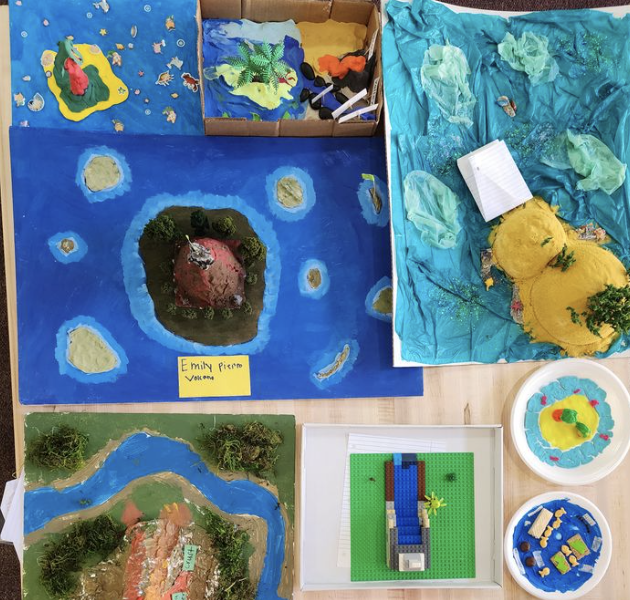
Sample Project Showcase
Showcase
Students understand the work of a Geologist.
Students learn how volcanoes + earthquakes have shaped most of the earth’s landscape.
Student can identify primary landforms + the Ring of Fire along the Pacific Crest tectonic plate.
Second-Grade Achievements on Standardized Testing
Instructional Targets for Mandarin at IFS (see Table above) are developed by referencing instructional targets at peer immersion schools, factoring in the percentage of weekly Mandarin instruction. Grade-level targets for English and Math are set by Star Renaissance.
Formal assessments begin in kindergarten at IFS and include math, English early literacy and reading, and speaking, listening, and reading in Chinese.
Assessment Suite: STAR, STAMP, and Level Learning
Mandarin Level Learning Testing
100% met IFS grade level Instructional Target on Listening, Speaking, and Reading Skills
In Speaking and Listening skills, our students consistently continue to move through the Intermediate levels in second grade. Students consistently reach Intermediate Low to Mid level in Reading.
Intermediate level speakers can participate in spontaneous spoken conversations on familiar topics, creating sentences and series of sentences to ask and answer a variety of questions. They can communicate information, make presentations, and express thoughts about familiar topics, using sentences and series of connected sentences through spoken language.
At the Intermediate Mid level, readers are able to understand short, non-complex texts that convey basic information and deal with basic personal and social topics to which the reader brings personal interest or knowledge, although some misunderstandings may occur. Readers at this level may get some meaning from short connected texts featuring description and narration, dealing with familiar topics.
Math STAR Assessment
On the STAR Math Assessment the average Grade Level Equivalent for student’s scores was - 4.3 - equivalent to a student who has started 4th grade.
Over the past 3 years, the STAR Assessment Math average across K-3rd is 92.3%
English STAR Assessment
100% of 2nd graders met or exceeded grade level standards in English reading + literacy.
On the STAR English Reading Assessment (grammar, phonics etc.) the average Grade Level Equivalent for student’s scores was 4.9 - equivalent to a student who has almost graduated from 4th grade.





